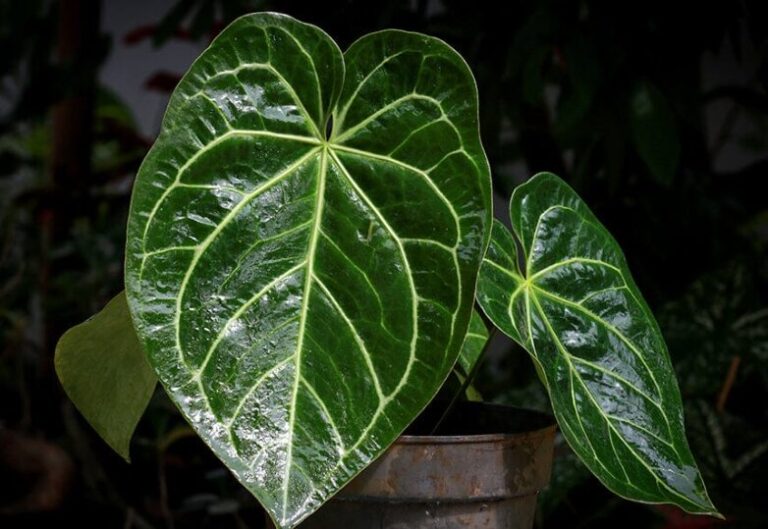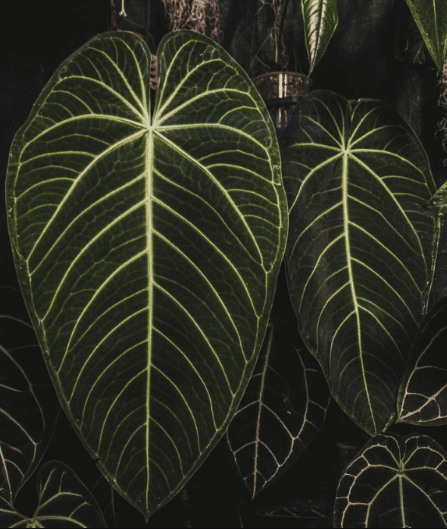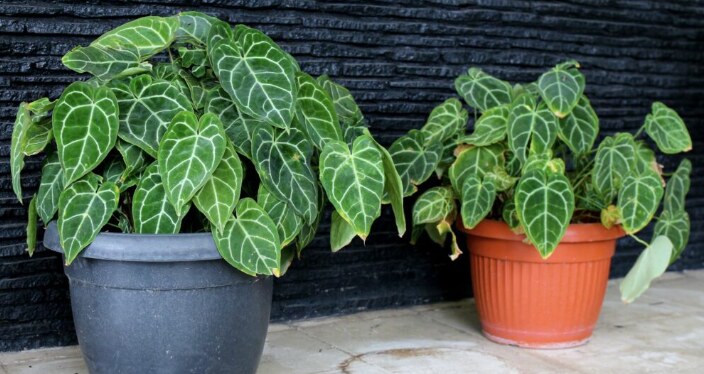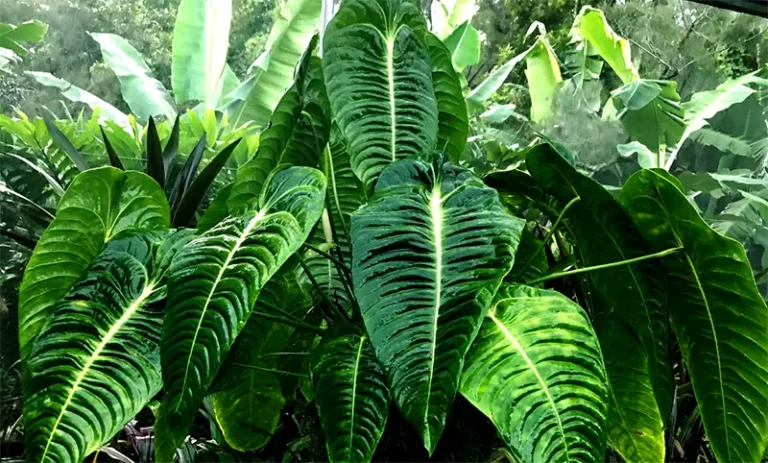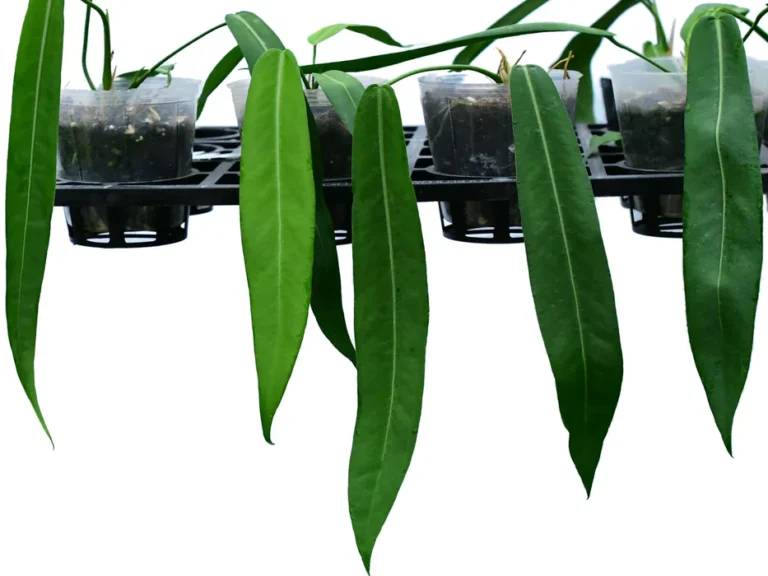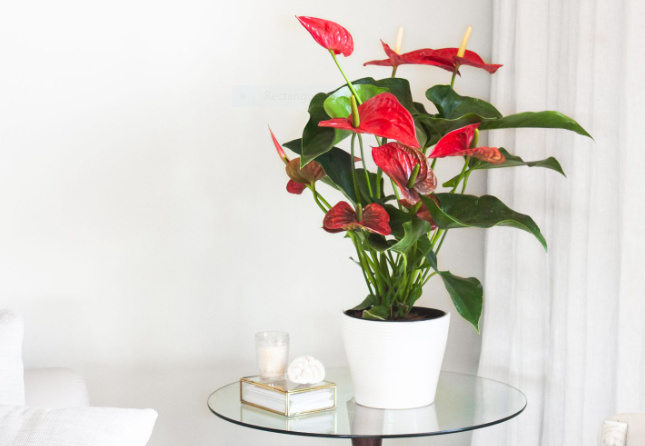ANTHURIUM HOOKERI: Varieties, Care, and Propagation
Anthurium Hookeri, also known as Bird’s Nest Anthurium, might have caught your attention if you love tropical plants. The tropical beauty is known for its large, glossy, and wavy-edged leaves that form a beautiful rosette shape.
In this complete care and propagation guide that also discusses Anthurium Hooker’s varieties, you will learn everything to keep this bird’s nest anthurium plant thriving – from light, watering, and fertilizer needs to step-by-step propagation tips.

What is Anthurium Hookeri? The Basics You Need to Know
Anthurium hookeri, also called the Birdnest Anthurium, is an epiphytic plant in the Araceae family native to tropical regions of Central and South America. European botanists discovered this plant in the 19th century, and over time, it gained popularity as an ornamental houseplant. Now, the plant is cultivated in many countries with suitable climates.

How to Identify Anthurium Hookeri?
Known for its unique growth pattern, the Bird’s nest is one of the most distinctive of the nest anthuriums. Its leaves are broadest near the tip and can grow up to 3 feet long.
The Hookeri plants you purchase from local nurseries are not true Hookeri, instead, they are hybrids.
So, how do you identify that the bird’s nest plant you buy is a true Anthurium Hookeri plant?
Look at the following characteristics to distinguish true hookeri from the hybrid varieties:
That’s how you distinguish a genuine Anthurium Hookeri from hybrids available at a local nursery!
What are the Different Varieties of Anthurium Hookeri?
Anthurium Hookeri has the following 3 varieties.
Anthurium Hookeri Albo Variegated
As the name suggests, the Anthurium hookeri albo variegated has variegated foliage with different colors or patterns. These patterns are characterized by patches of white, creamy, light green, contrasting with the darker green color.
Due to its unique characteristics, its price is high compared to other anthurium species. Availability and popularity depend on the region and specific market demands.

Anthurium Hookeri Yellow Variegated
Anthurium Hookeri Yellow Variegated is also known as Anthurium Hookeri Aurea Variegated. The variety has a beautiful appearance just because of its vibrant yellow highlights. The yellow variegation adds sunny and cheerful vibes to your indoor garden and gives it an eye-catching view. The coloring of leaves is the only difference between albo and yellow variegated. The yellow color on leaves appears early, so it is easy to notice these varieties’ differences.

Anthurium Hookeri Pink Variegated
As the name suggests, the Anthurium Hookeri Pink Variegated has a clear pink color on the foliage. The pink pattern on the foliage is commonly known as “Halfmoon,” “Flag,” “Marble,” or “Blizzard.” It originated from the cross of Anthurium Hooker Black with Anthurium Hookeri Yello. This variety of pastel colors gives your place an aesthetic appearance and an elegant touch.

How to Care for Your Anthurium Hookeri Plant?
Anthurium hookeri is an easy to care for plant. However, it needs your attention and understand to thrive properly.
The following are a few things you must know to care for your Bird’s nest in a better way.
What Are the Lighting Requirements for Anthurium Hookeri?
Anthurium hookeri needs bright and indirect sunlight to thrive. It needs 6-8 hours of lighting to thrive. Direct sunlight can burn its leaves, so don’t expose it to direct sunlight.
To ensure optimum lighting, place your plant near a south-facing window. Less than a 3-feet distance is necessary for maximum growth.
Proper lighting can keep your plant happy and healthy.
Exposure to insufficient lightning causes leaves to become pale. Conversely, yellow leaves indicate excessive sunlight exposure.
What Are the Watering Requirements for Anthurium Hookeri?
Anthurium hookeri needs watering when the upper soil has become dry. Many folks water it every 7-10 days. The plant requires more water during its growing season (spring and summer) and less water during its dormant period (winter and fall).
If the soil feels moist, then hold off on watering.
Watering frequency depends on factors such as pot size, temperature, humidity, and the plant’s overall growth rate. Overwatering can cause root rot. A pot with drainage holes helps remove extra water.
Anthurium Hookeri Soil Requirements
Anthurium hookeri thrives in a well-draining, loamy soil mix. A blend of peat, perlite, and pine bark is the best potting mix for its optimum growth. Ensure the soil retains moisture but also allows excess water to drain away to prevent root rot.
Anthurium hookeri loves to grow in well-damped and slightly acidic soils. For acidic soils, the pH should range between 5.5 and 6.5. In some cases, if you need to set the pH level, you can use some amendments like sulfur or dolomite lime.
Adding organic matter such as tree fern chips, sugarcane bagasse, taro peel, wood shavings, and coffee parchment to the soil will increase its nutrient content.
Anthurium Hookeri Repotting Requirements
Repot your Anthurium hookeri every 2-3 years or when it outgrows its current pot. The new pot should be one size larger than the previous one, and ensure it has drainage holes. For Repotting, gently remove the plant from its old pot, shake off excess soil, and place it in the new pot with fresh soil mix. Some major signs of repotting include reduced overall plant growth, root crowding at the base, and sticking out of the pot sides when using a plastic pot.
Temperature and Humidity Requirements
Anthurium hookeri prefers warm temperatures. So, try to place your plant in an area between 70 degrees Fahrenheit and 90 degrees Fahrenheit. Avoid placing it near air conditioners and heaters.
Temperatures above or below this range can cause droopy or wrinkled leaves. Always prefer a place where the temperature is ideal for your anthurium hookeri.
Similarly, this plant loves to grow in high humidity. The best humidity percentage for your plant is 60-70%.
If the humidity level is low, you can use a humidifier or place your plant in a group with other plants. Grouping with other plants will increase humidity levels naturally through transpiration.
Anthurium Hookeri Fertilizer Requirements
Fertilize your Anthurium plant when the soil is moist and the plant is growing actively. You can fertilize it every 4-6 weeks during the growing season and every six to eight weeks during the dormant period.
Many fertilizers are commonly available in the market, but NPK20-20-20 is the best as it strengthens and vibrantly promotes leaf strength and vigorous root growth.
Its 1010-10 ratio is also very effective. Before applying fertilizer, follow the label instructions to avoid burning leaves and harmful impacts on plant growth.
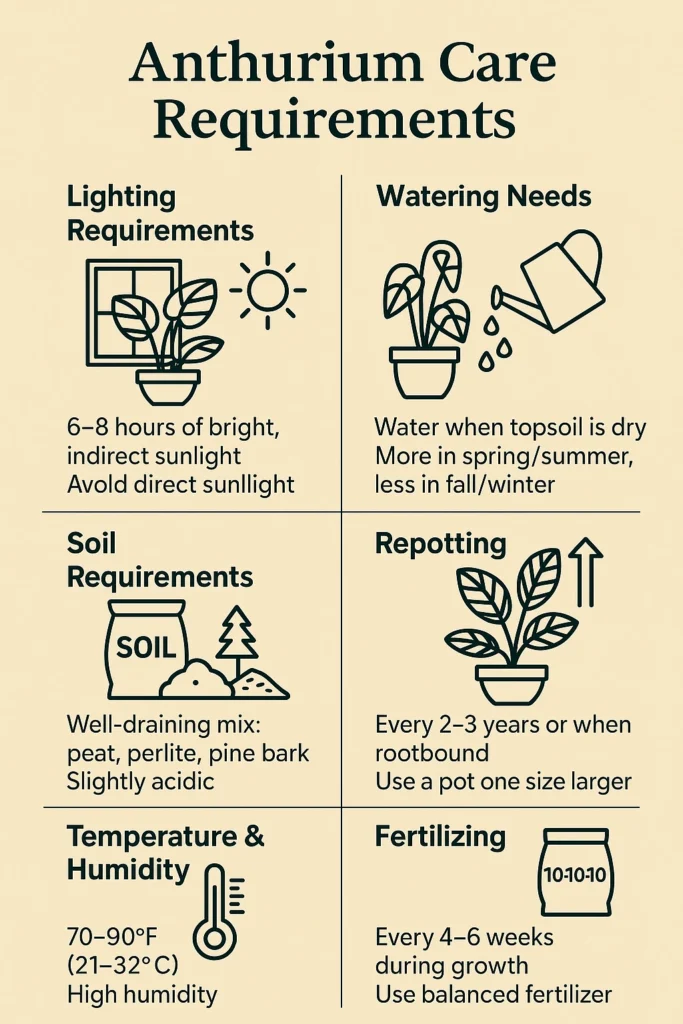
How to Propagate Your Anthurium Hookeri?
There are 3 basic methods, including Stem Cutting Propagation, Division Propagation, and Water Propagation, that you can use to propagate your Anthurium Hookeri.
Stem Cutting Propagation:
Stem cutting propagation is the method that involves cutting healthy and disease or damage-free stems with at least one node and rooting them in water or soil. Below are the basic steps that should be followed during the process:
Division Propagation:
This method involves using a dividing Anthurium Hookeri plant with overcrowded roots and multiple stems for new plant growth. Below are the basic steps that you can follow:
Water Propagation:
To propagate your Anthurium Hookeri in water;
Common Problems: Diseases and Pest Attacks and How to Fix Them?
Like other plants, anthurium hookeri is also sensitive to diseases and pest attacks. Let’s discuss some common issues.
Diseases
These are the common diseases present in Anthurium Hookeri.
1. Root rot
Root rot is the most common disease caused by excess watering and poorly drained soil. The root becomes spongy or soft, its color changes to brown or black, and your plant smells bad.
Solution: To fix this problem, remove the spongy part of the root with your hands or cut that part with scissors.
2. Anthracnose:
It is a fungal disease that also negatively impacts your anthurium hookeri and causes black spots on its stem, leaves, and flowers.
Solution: Cut the infected part of your plant with the help of scissors as soon as possible. Fungus loves humidity, so avoid overwatering during this problem.
3. Leaf spot
It is also a common problem in plants that causes small black and brown spots on the leaves and stems of your plant.
Solution: Cut all the infected areas to get rid of this disease.
Pest Attack
Anthurium hookeri is attacked by many pests, including aphids, spider mites, mealybugs, and scales. They suck the juice of the leaves sap and restrict the plant. They can be present on the undersides of the leaves.
Solution: Spray neem oil or use insecticidal soap to eliminate these pests.
Also check What is Calathea Plant?
FAQS
Does Anthurium Hookeri grow faster?
Yes, anthurium hookeri grows faster. It produces new leaves very quickly every week.
Why do Anthurium Hookeri leaves appear brown?
There are many reasons why your plant’s leaves turn brown. The major reasons are overwatering, improper fertilizers, and nutrient deficiency.
Conclusion
Anthurium Hookeri, a tropical beauty, is known for its glossy foliage and a beautiful rosette shape. The plant with its various varieties, is very easy to care for.
With regular watering, humidity, optimum temperature, and appropriate lighting, you keep your Bird’s Nest thriving in your home garden.
If you want to produce multiple hookeri plant, follow the different propagation methods, including stem cutting, root division, and water propagation methods.
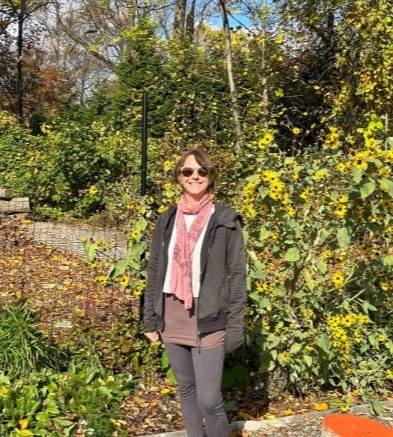
About Author
Hi, I’m Emily Davis, a passionate tropical plant enthusiast dedicated to sharing knowledge and expertise with plant lovers. Through his blog, I will provide guides, tips, and tricks for caring for tropical houseplants species like Alocasia, Anthurium, Calathea, Philodendron, Begonia, and many more that will help readers bring a touch of paradise into their own homes. With a deep love for the vibrant colors and lush textures of tropical flora, I’m committed to inspiring others to cultivate their own tropical oasis.

